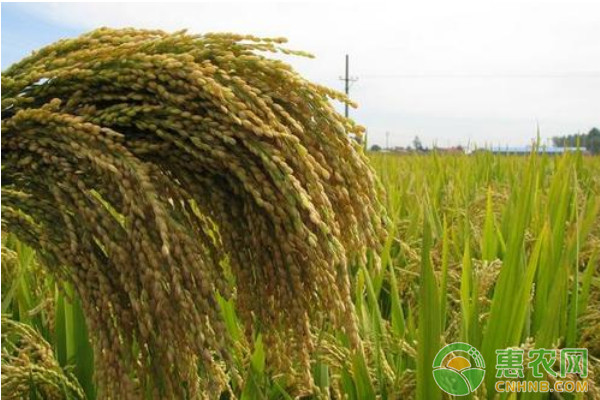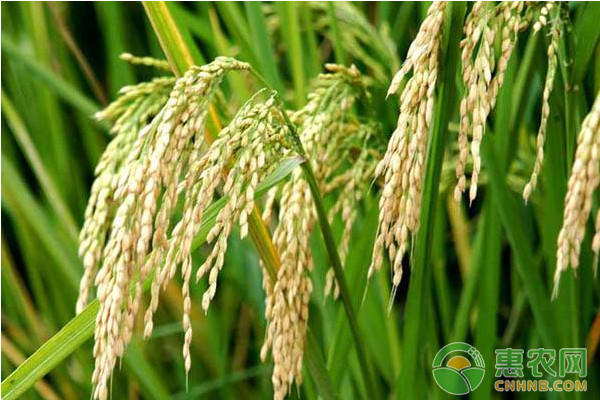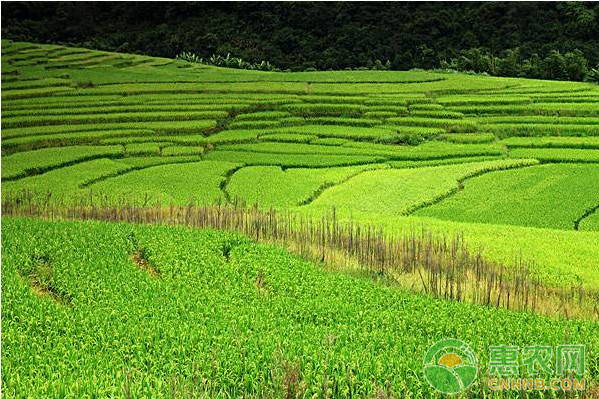Rice wants to grow normally, and the characteristics of fertilizer need to be understood. After understanding the key points for rice to be used, it is necessary to master the pollution-free fertilization technology of rice so that rice can be grown.

1 Characteristics of rice fertilizer needs
In the normal growth and development process, rice must absorb 16 kinds of nutrients such as carbon, hydrogen, oxygen, chlorine, phosphorus, potassium, calcium, magnesium, sulfur, zinc, boron, manganese, copper, iron, molybdenum and chlorine. The number is also large.
The absorption of nutrients by rice is different in different growth stages. The nitrogen uptake of southern rice (early rice and late rice) was 2.3%~35.5% of total absorption during the mushrooming period, 48.6%~58.7% in the long-term stage, and 15.9%~19.0% in the fruiting stage; the absorption of phosphorus, The sedimentation period is 15.9%~18.7%. The long panicle stage is 47.4%~57.0%, the fruiting period is 24.3%~36.7%; the potassium uptake is 20.5%~22.9%, and the long ear stage is 51.8%. ~61.9%, the fruiting period is 16.2%~27.7%. The nitrogen uptake of early rice in Northeast China was 79.4% of the total growth period, 11.02% in the long ear stage, and 95.8% in the fruiting stage. The phosphorus uptake was 41.26% in the period of the canal and 26.26 in the long ear stage. %, the fruiting period is 32.48%; the potassium absorption rate is 40.96% in the channeling period and 59.04% in the long earing stage, and is no longer absorbed during the fruiting period.
The soil in the north and south rice areas is different, and there should be differences in fertilization ratio. The soil in the south is mostly acidic, the phosphorus is rich, and the potassium is deficient; the northern rice fields are mostly alkaline, lack of phosphorus, and the phosphate fertilizer is easily fixed by the soil, while the potassium is relatively abundant. Therefore, the ratio of chlorine, phosphorus and potassium in southern rice is 1: (0.3-0.5): (0.7-1.0), with an average of 1:0.4:0.9; while the ratio of fertilization in northern rice is 1:0.5:0.5. More suitable.
2 The role of chemical fertilizers in rice production
Fertilizer, also known as inorganic fertilizer or mineral fertilizer, refers to chemical substances that directly or indirectly supply nutrients to plants, promote growth, increase yield, and improve quality. Rice requires a certain amount of macro elements such as nitrogen, phosphorus, potassium, silicon, sulfur, calcium, magnesium, etc. in the production process. A small amount of micronutrients such as iron, manganese, zinc, molybdenum, copper, etc. are also required. It is impossible to provide all of these nutrient elements required for rice growth. Therefore, only fertilization can be used to supplement the insufficient nutrition. For example, according to the “N†tracer assay, 31% of the nitrogen uptake from transplanting to the highest channel is from soil nitrogen and 69% from fertilizer. If it is not possible to follow up the returning green fertilizer and the branch channel after transplanting, it will not be able to ensure effective channel separation. Therefore, chemical fertilizer plays an important role in rice production.

The main functions are: rationally replenishing nutrients in the soil, accumulating nutrients, increasing soil fertility, and greatly increasing yield; applying fertilizer at different stages can enhance the resistance of rice to adverse environmental conditions and reduce the occurrence of pests and diseases; rational application of chemical fertilizers can improve The quality of rice increases the commercial value of rice.
3 Rice pollution-free fertilization technology
The amount of rice applied can generally be based on the target yield. For medium and low-yield rice fields, farmers should use a single base fertilizer to save labor. For high-yielding paddy fields, after determining the amount of fertilizer applied according to the target yield, the general principle of fertilization is the combination of organic and inorganic fertilizers, the application of base fertilizer, general application of fertilizer, and early application of topdressing. However, depending on the variety, fertilization methods vary.
For areas or varieties with short growth period, such as early maturing species in northeastern China, wheat glutinous rice in North China, and early rice in southern China, most of them use pre-explosive post-fertilization fertilization method, that is, heavy application of base fertilizer, and base application accounts for 14% of total fertilization. Above, and early application of the application of the channel fertilizer, discretionary application of panicle fertilizer, to achieve the "previously blazing, medium-term stable, late and healthy" requirements. The number of main attacking points, appropriate for grain efficiency and 1000-grain weight.
For medium rice, it is often used to promote the medium-controlled fertilization method, that is, the application of base fertilizer, the amount of base fertilizer generally accounts for 70%-80% of the total fertilization amount, and pays attention to the division of fertilizer and panicle fertilizer, and controls the fertilization at the end of the divisional channel and the beginning of panicle differentiation. , the so-called "attack, tail, control middle." This kind of fertilization method is equal to the grain of the ear, and it is necessary to fight for more spikes and increase the number of grains.
The application of organic fertilizer in rice fields should be carried out by evenly removing the whole field when plowing, and then turning into the tillage layer. Generally, about 2 m per mu is applied. There are many types of organic fertilizers, such as green manure, milk vetch, biogas fertilizer, grass pond fertilizer, compost, manure, straw returning, and refined organic fertilizer. No matter what kind of organic fertilizer, it should be decomposed. Nitrogen fertilizer can be divided into three parts: a small part is used as a noodle fertilizer after water storage, some is used as top dressing, and the other part is used as base fertilizer. Regardless of the base fertilizer and top dressing, the nitrogen fertilizer should be applied in depth to improve fertilizer efficiency and reduce losses. For nitrogenous fertilizers, ammonium and amide nitrogen fertilizers such as ammonium sulfate, ammonium hydrogencarbonate, ammonium chloride and urea should be applied. Nitrate nitrogen fertilizers, such as ammonium nitrate, sodium nitrate, calcium nitrate, etc., should not be applied. Because these fertilizers are applied to paddy fields, they are highly mobile, easily leached with water, and reduce fertilizer efficiency. They are also under the action of denitrifying bacteria in the reducing layer. The nitrate nitrogen is converted into nitrogen and nitrogen oxide and escapes into the air, causing a large loss of nitrogen macro to reduce fertilizer efficiency. Phosphate fertilizer should be applied as the base fertilizer to the soil layer with the most root distribution because of its small mobility. The type of phosphate fertilizer, the southern acidic soil should be based on soluble phosphate fertilizer, such as calcium magnesium phosphate fertilizer, steel slag phosphate fertilizer, etc., less water-soluble phosphate fertilizer, such as superphosphate, heavy superphosphate. Water-soluble phosphorus can be applied at the root of the transplanting, saving fertilizer and quick effect. In the alkaline soil in the north, water-soluble phosphate fertilizer can be applied to improve its fertilizer efficiency. Because it is easily fixed by the combination of calcium ions, the effectiveness is reduced, and the application amount should be appropriately increased. Rice is only absorbed by potassium fertilizer after jointing. The amount of potassium is still more in the late growth stage. Potassium is adsorbed in the soil by ionic state, and the plant is easily absorbed. Therefore, potassium fertilizer is generally applied as a base fertilizer to the paddy field. In some high-yield rice fields, potassium fertilizer can also be divided into base fertilizer and applied twice at the jointing and booting stage, which promotes the development of channels and stems, promotes grouting, increases grain weight and resists lodging.

Rice is sensitive to trace elements. Southern acid paddy soil is prone to zinc deficiency. When soil available zinc is less than 0.5mg/kg, zinc fertilizer should be replenished in time. Generally, 1kg~2kg of zinc sulfate per mu is used as base fertilizer. Because of the aftereffect of zinc fertilizer, it is usually applied once every 2 years. It is not recommended to add trace elements to compound fertilizers. The author's experience is that the addition of trace elements is best for foliar application. After rice sleeves, timely spraying 0.2%~0.4% potassium dihydrogen phosphate 2 times ~ 3 times, each time 50kg~75kg per mu, is also an important measure for rice to capture high yield.
The above is the full content of rice fertilizer needs and pollution-free fertilization technology. Food growers who need it can come to Huinong.com to learn more.
Eye Massage,Best Eye Massager,Eye Care Massager,Eye Roller Massager
Shenzhen Jie Zhong Lian Investment Co., Ltd. , https://www.meizons.com